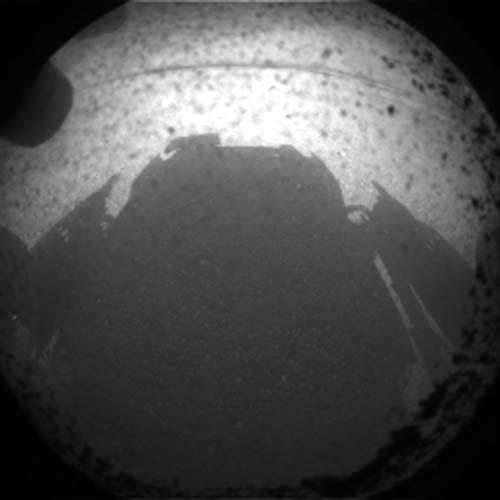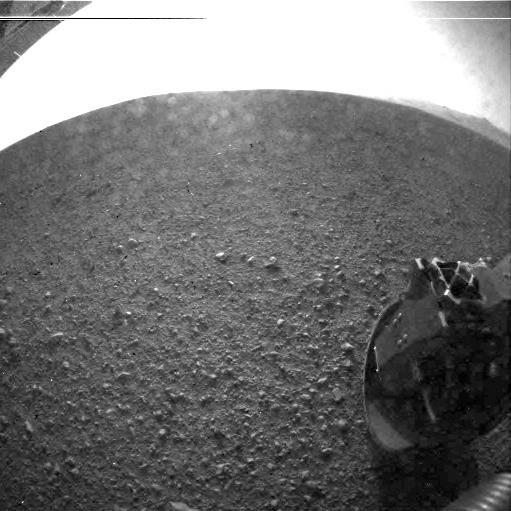NASA Rover's 1st Photos of Mars Reveal Unexplored Terrain
After a spectacular landing on Mars, NASA's huge Curiosity rover is beaming back the first clear views of its new crater home and the photos already have scientists buzzing.
One new Mars photo from Curiosity shows the landing site, called Gale crater, covered with what appear to be tiny pebbles as they appeared just after the rover's landing today (Aug. 5). Part of the 96-mile-wide (155 kilometer) crater's rim is visible rising above the horizon, in the distance.
"Curiosity's landing site is beginning to come into focus," said rover project manager John Grotzinger, of the California Institute of Technology in Pasadena, Calif., in a statement. "In the image, we are looking to the northwest. What you see on the horizon is the rim of Gale Crater."
Grotzinger said he's already wondering what fluke of Martian geology created the tiny rocks in Curiosity's camera view.
"In the foreground, you can see a gravel field," Grotzinger said. "The question is, where does this gravel come from? It is the first of what will be many scientific questions to come from our new home on Mars."
One of Curiosity's six wheels is also visible in the new photo, which is actually a larger, clearer version of a tiny thumbnail image earlier sent back by the rover. The new image was taken by one Curiosity's navigation cameras and is about 512 pixels wide and tall, but still only shows half the resolution the camera is capable of.
Curiosity will snap color photos of Mars at much higher resolutions later this week once the rover raises its camera-tipped mast, mission scientists said.
NASA's Mars rover Curiosity is a 1-ton robot designed to explore the Red Planet like never before. The rover carries an instrument-laden robotic arm and tool kit to seek out any evidence that Mars has ever been habitable for microbial life.
The $2.5 billion rover will spend two years exploring Gale crater and is expected to climb a 3-mile (5 km) mountain in the crater's center. NASA launched Curiosity rover, which is also known as the Mars Science Laboratory, in November 2011. The mission is overseen by NASA's Jet Propulsion Laboratory in Pasadena.
Visit SPACE.com for complete coverage of NASA's Mars rover landing. You can follow SPACE.com Managing Editor Tariq Malik on Twitter @tariqjmalik and SPACE.com on Twitter @Spacedotcom. We're also on Facebook & Google+.
Copyright 2012 SPACE.com, a TechMediaNetwork company. All rights reserved. This material may not be published, broadcast, rewritten or redistributed.


